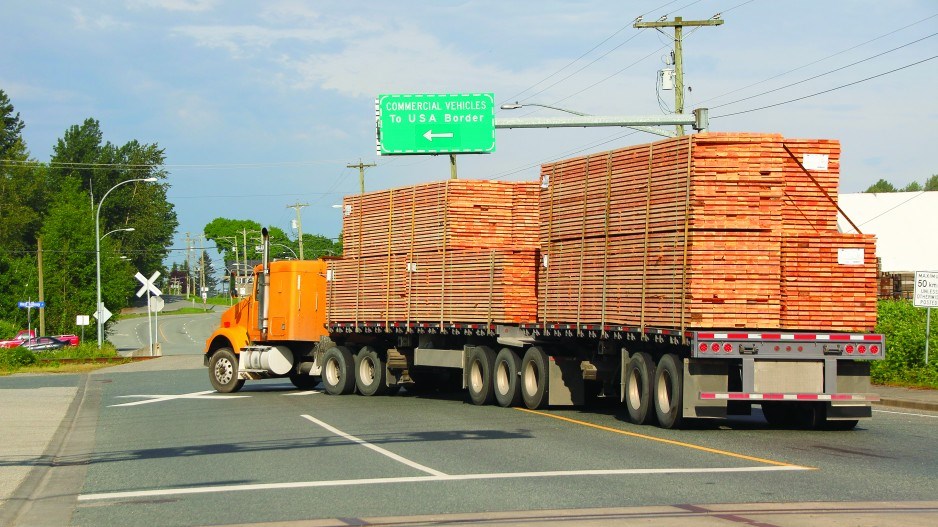North American forestry companies, including Canadians, are making record profits, despite American softwood lumber duties, thanks to high lumber prices in the U.S.
Those record high lumber prices are partly due to American duties on Canadian softwood lumber – something that U.S. President Donald Trump has, without a hint of irony, recently complained about.
According to Wood Resource Quarterly, many forestry companies in North America and Europe are reaping record profits.
Between January 2017 and June 2018, average prices for lumber in the U.S. increased by 40%, Wood Resource Quarterly reports.
“Lumber prices in the U.S. have experienced a spectacular surge in 2017 and the first half of 2018. By the end of the (second quarter of 2018) the benchmark lumber price index reported by the market report Random Lengths reached its highest level in at least 30 years.”
“We had record high prices in the second quarter, by a mile,” said Russ Taylor, managing director for Forest Economic Advisors Canada.
The annual average for 2X4 lumber in B.C. in 2016 was US$308 per thousand board feet, according to B.C. government statistics. The monthly average, year-to-date, has been US$568 per thousand board feet.
Second quarter financials and stock prices for B.C.’s three big forestry companies reflect the high prices for lumber in the U.S.
West Fraser Timber Co. (TSX:WFT), B.C.’s largest forestry company by market cap, reports record sales and operating earnings and has seen its share prices double since the beginning of 2017.
Its sales – $3.2 billion to date – were up 76% over the previous quarter and 137% over Q2 2017, according to second quarter financials. West Fraser’s stock has risen from about $46 per share at the beginning of 2017 to $90.74 as of August 21.
Canfor Corp. (TSX:CFP) reported earnings of $203 million in the second quarter, up $78.3 million over the first quarter, despite having deposited $51.7 million to cover American lumber duties.
Canfor’s shares have also doubled since the beginning of 2017 – to $30.77 per share from $15 at the beginning of 2017.
Interfor (TSX:IFP) reported second quarter earnings of $63.8 million, compared with $33 million in the first quarter, and $24.5 million in Q2 2017. It has paid $14.8 million in duties this year to date. Its shares have gone from about $15 at the beginning of 2017 to $23.22 per share to date.
The record high lumber prices are part of a supercycle that Taylor said was predicted a decade ago, based on a shrinking timber supply. Canada has essentially reached Peak Wood.
In B.C., roughly half of the annual allowable cut has been eliminated in the past decade by pests and fires. Quebec, meanwhile, has seen its timber supply shrink by 30% over the past two decades, largely due to conservation measures, Taylor said.
Western U.S. producers see a lot of their logs exported to China, which tightens the North American supply further, Taylor said. The one region with an ample timber supply is the U.S. south, which explains why Canadian forestry companies have been buying up sawmills there.
“The big bucks are being made in the U.S. south,” Taylor said. “The U.S. south mills are the ones making the highest margins in North America, and in the world.”
Canada’s big three forestry companies now own around 45 American sawmills, Taylor said, mostly in the U.S. south, compared to 33 mills in Western Canada.
Last week, Trump mused that wildfires raging in California were partly cause by Canadian lumber imports, then went on to lament the high prices Canadian producers are charging for lumber.
“Canada is charging us a lot of money to bring their timber down into our country,” he said.
But a 20% premium that Americans are now paying for Canadian lumber is the result of American softwood lumber duties.
“Let’s see now. Who put a duty on Canadian lumber? Let me think about that,” Taylor said.
Taylor predicts high lumber prices will continue for another 12 to 18 months.




